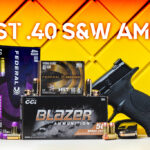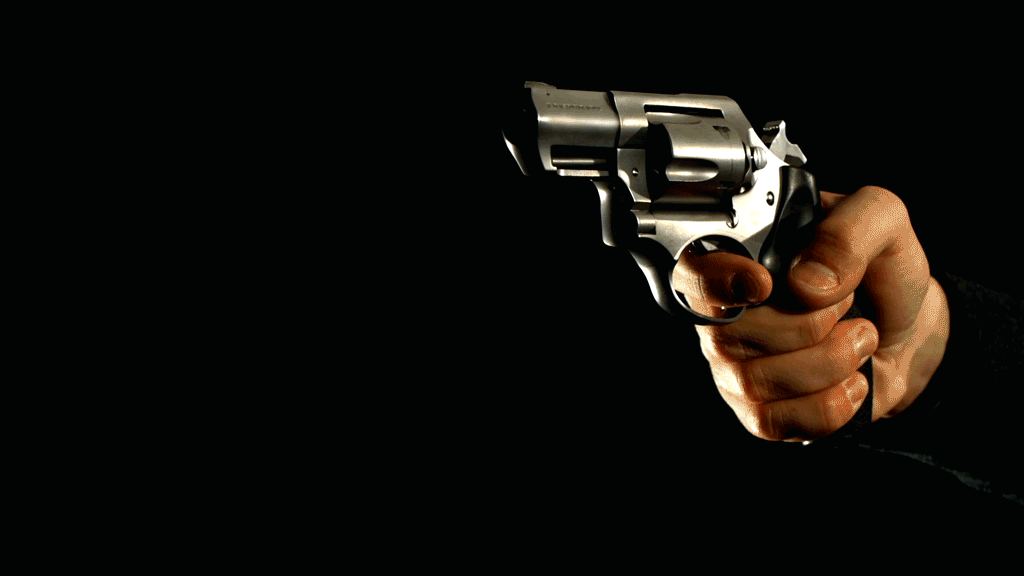
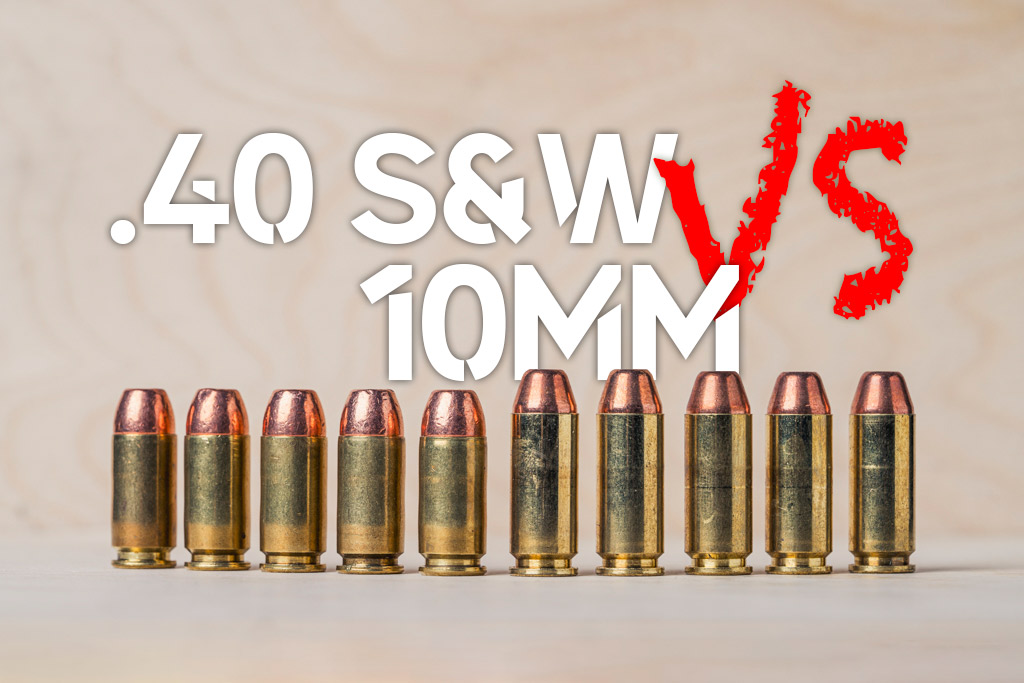
Regarding handgun cartridges, the 40 S&W VS 10mm stand out as popular choices among enthusiasts and professionals alike. Each cartridge offers more power than the 9mm and has many loyal followers. While interest in the 40 S&W has waned over the years, the 10mm has seen a resurgence, thanks in part to manufacturers producing new guns to harness the power of the cartridge. If you’re stuck between which option to choose, this article will help you make an educated decision.
Both have their unique histories, characteristics, and applications. This article will explore each cartridge’s background, compare their features, and discuss their best uses.
A Brief History
The 10mm cartridge came about in the early 1980s, mainly due to the efforts of Lieutenant Colonel Jeff Cooper, a firearms legend. He envisioned a powerful handgun cartridge capable of significant stopping power and penetration. Using Cooper’s design, the FBI developed a “light” 10mm load to issue to their field agents. Not to be outdone, Smith & Wesson also had a .40 caliber load in development at the same time.
Smith & Wesson were confident their new .40 caliber round could achieve identical ballistics to the FBI’s light 10mm, with the advantage of their shorter cartridge fitting into 9mm size pistols. The announcement of the FBI’s development of the 10mm likely gave S&W the kick in the pants they needed to bring their .40 caliber to market. The FBI officially adopted 10mm in Nov 1989 and the .40 S&W cartridge was unveiled in Jan 1990 at SHOT Show.
There’s a lot of rumor and innuendo as to why the FBI abandoned the 10mm round shortly after adopting it. The most common rumor is that the recoil was too intense for some agents to handle. While there are no actual statements from the FBI to back up that claim, there are official data points that indicate reliability, size, and weight were key factors in making the decision to switch. Unofficially, it’s possible that the FBI realized the .40 S&W cartridge made the 10mm obsolete for their purposes and the decision was made to move forward in order to protect their funding.
Today, law enforcement agencies nationwide often use the .40 S&W. It’s also quite common among handgun owners, though the 9mm remains the most popular. The 10mm is far less common due to its increased recoil and cost.
How Do the 10mm and .40 S&W Stack Up?
When comparing the 10mm to the .40 S&W, there are several factors to consider:
- Power: The 10mm is more powerful, delivering higher velocity and energy.
- Recoil: The .40 S&W offers lower recoil, a significant factor for shooters with less experience or lower hand strength.
- Capacity: The bullet diameter is the same, meaning the same size magazine, will hold the same amount of ammo.
The overall length of the 10mm round is longer than that of the .40 S&W. The case capacity of the 10mm is also larger than the .40 S&W, meaning it can hold more powder. Keep in mind that handguns chambered in 10mm are built on a larger frame than those chambered in .40 S&W, but generally, they hold the same number of rounds. For example, the standard Glock 22 holds 15+1, rounds of .40 S&W ammo, and the standard Glock 20 holds 15+1 rounds of 10mm. Both handguns are capable of accepting magazines with greater capacities.
Some other factors you need to keep in mind are cost and availability. While the 10mm is not a “rare” cartridge, it is a bit tougher to come by than the .40 S&W. Also, 10mm cartridges are more costly. Both cartridges have about the same number of bullet types available in the market. These range from standard FMJ training ammo to highly specialized JHP and self-defense rounds.
| Bullet Diameter | Base Diameter | Case Length | Overall Length | Max Bullet Weight | Max Pressure | |
|---|---|---|---|---|---|---|
| .40 S&W Ammo | .400″ /9mm | 0.424″ | 0.850″ | 1.13″ | 200gr | 35,000 psi |
| 10mm Ammo | .400″ /10mm | 0.425″ | 0.992″ | 1.26″ | 230gr | 37,500 psi |
Pros & Cons: 40 S&W VS 10mm
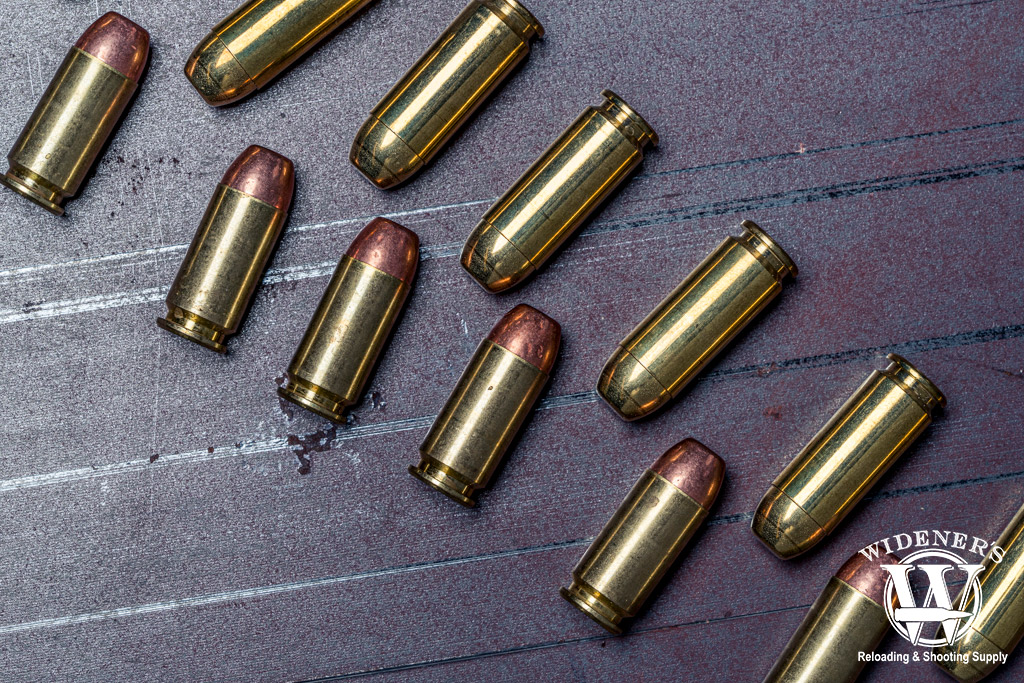
Comparing the 10mm cartridge on the top, and the .40 S&W cartridge on the bottom.
Now, let’s break down the good and bad of each cartridge.
10mm Pros and Cons
-
Pros:
- Superior stopping power and penetration.
- Suitable for hunting and specific law enforcement applications.
- Effective for self-defense against larger predators.
- Good ballistic performance at longer distances.
- There are revolver and PCC options that are compatible with the cartridge.
-
Cons:
- Higher recoil can be challenging for some shooters.
- Magazine capacity may be limited depending on the firearm.
- Overpenetration is a concern in urban settings.
- More expensive on average than .40 S&W guns.
- Ammo costs/training costs VS smaller cartridges.
.40 S&W Pros and Cons
-
Pros:
- Recoil is snappy, but more manageable for a broader range of shooters.
- Widely used by law enforcement, with a proven track record.
- Less expensive on average than 10mm guns. Easy to find deals on trade-in firearms.
- Higher capacity magazine options are available depending on the firearm.
- There are revolver and PCC options that are compatible with the cartridge.
-
Cons:
- Less power and penetration compared to the 10mm.
- Less stopping power at distances compared to the 10mm.
- Ballistic performance is more similar to the smaller 9mm cartridge.
- Fewer gun/accessory options are available VS smaller cartridges.
- Ammo costs/training costs VS smaller cartridges.
As you can see, there is no clear “best” option. It all comes down to your intended application, shooter skill, frame, and budget.
The most significant variable is what you need the weapon for. While a skilled shooter with a more petite frame can undoubtedly manage the 10mm, why bother if the .40 S&W will deliver the requisite performance?
Best Uses for Each Cartridge
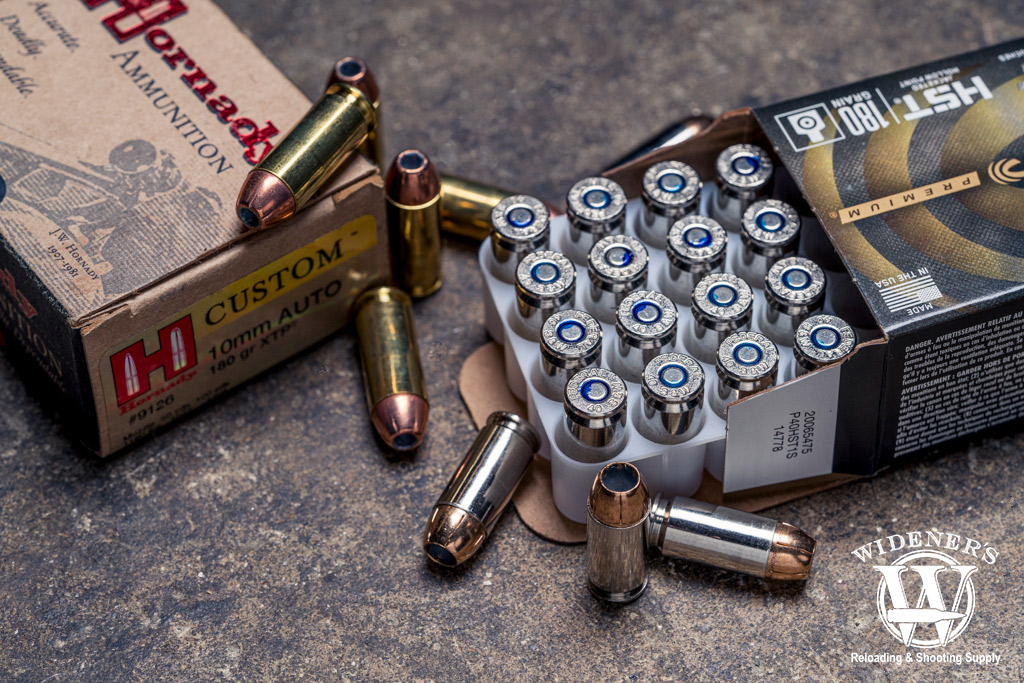
40 S&W VS 10mm: Both cartridges make a strong case as self-defense ammo options, with the .40 S&W having more practical applications.
There are numerous use cases for each cartridge. The .40 S&W is more versatile, while the 10mm has better stopping power. Here are a few typical applications for both cartridges.
Applications of the 10mm
The 10mm is an ideal sidearm cartridge for outdoor activities like hunting and protection against large animals. It’s also favored by specific law enforcement units for its stopping power, especially in rural areas where longer-range shots might be necessary.
Applications of the .40 S&W
The .40 S&W is a versatile cartridge suitable for self-defense and law enforcement use, particularly in urban settings. Its balance of power and control makes it an excellent choice for home defense and officers needing a reliable and effective sidearm. Due to its cost, it is also a wonderful option for recreational shooting.
Ballistics Overview
When it comes to ballistics, the 10mm generally offers higher velocity and more energy downrange compared to the .40 S&W. This translates to better penetration and potential stopping power. The .40 S&W, on the other hand, offers sufficient power for most self-defense situations while being easier to control, especially in rapid-fire scenarios.
Naturally, the ballistics performance of each will vary based on several factors. These include the quality of your weapon system, the length of your barrel, and the brand or style of the projectile.
Ballistics Compared
When comparing 40 S&W VS 10mm, the former will have more stopping power and better penetration. Conversely, the .40 S&W will be slightly cheaper, have less recoil, and be easier to control.
| Caliber | Bullet Type | Bullet Weight | Velocity (Muzzle) | Energy (Muzzle) |
|---|---|---|---|---|
| .40 S&W | Full Metal Jacket (FMJ) | 180gr | 1,000 FPS | 400 FT LBS |
| .40 S&W | Jacketed Hollow Point (JHP) | 180gr | 1,010 FPS | 408 FT LBS |
It’s not all bad news with the 10mm, it can handle heavier bullet weights and can also withstand more psi. It has formidable knock-down power and can punch a hole in just about any non-armored surface.
| Caliber | Bullet Type | Bullet Weight | Velocity (Muzzle) | Energy (Muzzle) |
|---|---|---|---|---|
| 10mm | Full Metal Jacket (FMJ) | 180gr | 1,030 FPS | 424 FT LBS |
| 10mm | Jacketed Hollow Point (JHP) | 200gr | 1,100 FPS | 537 FT LBS |
The Bottom Line: 40 S&W VS 10mm
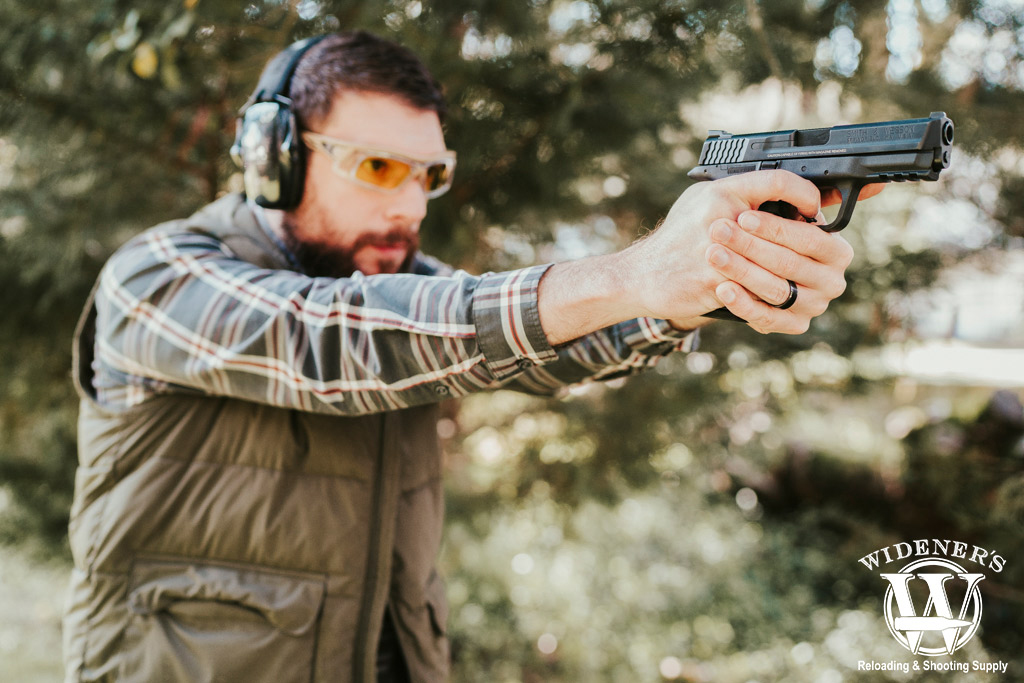
The choice between 40 S&W VS 10mm depends mainly on your specific needs and preferences.
The 10mm and the .40 S&W have distinct advantages and ideal applications. The choice between them depends mainly on your specific needs and preferences.
- Opt for the 10mm if you need maximum power for hunting or defense against larger threats and are comfortable handling its significant recoil.
- Choose the .40 S&W for a well-balanced cartridge that provides ample power with more manageable recoil, suitable for both self-defense and law enforcement.
No matter your choice, both cartridges have proven their worth in various situations and maintain respect in the firearm community. Remember, the best cartridge is the one that fits your needs and feels right in your hands.


